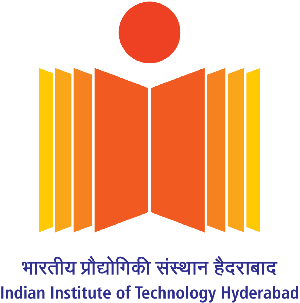|
.jpg) |
Tutorial 1:
Title of the Tutorial: Building IoT Solutions with Edge Intelligence
Speakers: Mr. Anand Joshi, Dr. N. Govinda Rao and Mr. Karthik Suryadevara, Redpine Signals
Schedule: February 25th, 9:30am to 12:40pm, Auditorium
Abstract:
An emerging trend in the IoT is a focus on a better utilization of available communication bandwidth and battery by performing intelligence at the edge. AI algorithms are compute and power intensive and that has prevented AI from being adapted in edge devices. In this session, we will be providing information in depth on building IoT applications with device intelligence. We will also be presenting a new platform that enables running AI applications on the edge. We will be discussing hardware and software tradeoffs necessary to achieve acceptable performance and power. A use case that utilizes the complete platform along with a cloud component will also be presented.
Description
Objective
This tutorial aims at enabling participants to create IoT applications with AI content.
Topics covered in the tutorial
Introduction to AI - A conceptual framework
IoT, Cloud and AI: Their application in medical, consumer and industrial sectors
Introducing a platform that runs AI applications on the edge
Use case: Building an AI application- Gesture recognition
Novelty, technical significance and importance of the tutorial
Building AI applications is a makers dream in today’s innovative connected world, having
relevance in multiple sectors such as medical, consumer and industrial. But doing so
requires understanding of the complex AI framework and building the applications from
scratch, which in itself comes across as a humongous and unachievable feat.
In the session, participants would be introduced to an industry-first platform on which they
can learn and use a C based AI library for rapid application development that brings together
IOT and AI. We will be discussing hardware and software tradeoffs necessary to achieve
acceptable performance and power. A use case that utilizes the complete platform along with
a cloud component will also be presented.
This tutorial aims at enabling a non-AI expert to program AI applications.
Tentative timetable
15 mins: Introduction to AI- A conceptual framework
15 mins: IoT, Cloud and AI
30 mins: Introducing a platform for running AI applications on the edge.
1.5 hours: Building an AI application: Gesture recognition
Speakers Biography:
Mr. Anand Joshi is Sr. Director of AI products at Redpine Signals. He has over 20 years of experience in semiconductor and embedded industry. Prior to joining Redpine, he was market analyst at Tractica with focus on AI. He advised many Fortune 500 companies regarding AI products and strategy in that role. Earlier he was vice president and general manager of a business unit at Alten Calsoft, which was Adobe’s scaling partner and specialized in Adobe Flash Player. During his tenure at Calsoft, Joshi started the business unit and grew it to over 100 people worldwide. Anand was also a co-founder of Poseidon Design Systems, a startup focused on hardware acceleration of video where he successfully raised two rounds of capital. His early career spanned various engineering and marketing positions at Synopsys and LSI Logic.
Anand has MBA from University of California Irvine and MSEE from Virginia Tech.
Dr. N. Govinda Rao is an AI Research Scientist at Redpine Signals. He has over 10 years of
research experience and over 5 years corporate experience in data science, predictive
modelling, machine learning and machine analytics. Prior to joining Redpine, he was a data
scientist at Cyient. Dr. Rao has done ample work in the field of supervised and unsupervised
machine learning algorithms and has delivered end-to-end analytic solutions and built
multiple predictive models. He has several research publications and presentations to his
credit.
Dr. N. Govinda Rao had been awarded Ph.D from Andra University in 2012 and has been
certified on Practical Machine Learning, Regression Models and Exploratory Data Analysis
by Johns Hopkins University, Baltimore.
Mr. Karthik Suryadevara is an Embedded Engineering Professional at Redpine Signals.
Having a career spanning over 10 years, Karthik has experience in developing various end-
end IoT solutions and applications using Wi-Fi, BT/BLE, LF technologies. He has worked on
the tape out of several products in varied domains ranging from RTLS(Real Time Location
Systems) to AI (Artificial Intelligence) and has been vital in providing smart solutions for
several verticals such as healthcare, industrial, supply chain/logistics and agriculture.
Karthik has a Bachelor of Engineering from Sriram Engineering College, Chennai, and has
been conferred his M.S from Portland State University, Oregon, USA.
|
 | Tutorial 2:
Title of the Tutorial: Modeling and Analysis of mmWave Networks
Speaker: Dr. Abhishek Kumar Gupta, IIT Kanpur
Schedule: February 25th, 9:30am to 12:40pm, LH-1
Abstract:
This tutorial will focus on mathematical models and analytical techniques for millimeter wave (mmWave)cellular systems. As upcoming cellular standard (5G) has put very high requirements, it has been evident that just trivial changes in current 4G standard will not be sufficient to achieve these high expectations. The use of mmWave frequencies in cellular services is one of the few unconventional features being proposed in the 5G standard. The two fundamental physical differences of mmWave from conventional Sub-6GHz communication are (i) vulnerability to blocking, and (ii) the need for significant directionality at the transmitter and/or receiver, which is achieved through the use of large antenna arrays of small individual elements. This tutorial will cover distinguishing features of mmWave systems and various techniques to model these features. An analytical approach based on stochastic geometry that allows the computation of the statistical distributions of the downlink SINR and also the per link data rate will be presented. Tutorial will also cover various design insights that can be derived from the analysis including possible infrastructure and spectrum sharing, self-backhauling and optimal network deployment. Speaker Biography:
Abhishek K. Gupta received his B.Tech.- M.Tech dual degree in Electrical Engineering from IIT Kanpur in 2010 and PhD degree in the Department of Electrical and Computer Engineering at the University of Texas at Austin in 2016. He is currently working as an Assistant Professor in the Department of Electrical Engineering at Indian Institute of Technology Kanpur. His research interests in- clude wireless communication, stochastic geometry and numerical methods. He was recipient of GE-FS Leadership Award by General Electric (GE) Foundation and Institute of International Education in 2009 and IITK Academic Excellence Award for four consecutive years. He is author of the books MATLAB by Examples (Finch, 2010) and Numerical Methods using MATLAB (Springer Apress, 2014). Previously he was working as Sr. Standards Engineer at Samsung Research America in Dallas, TX. In past, he has worked in Applied Microelectronics Circuit Corporation (Pune), Futurewei Technologies (NJ) and Nokia Networks(IL). |
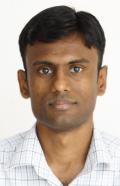 | Tutorial 3:
Title of the Tutorial: An Introduction to Bitcoin
Speaker: Dr. Saravanan Vijayakumaran, IIT Bombay
Schedule: February 25th, 9:30am to 12:40pm, LH-2
Abstract:
The objective of this tutorial is to describe the functioning of the Bitcoin cryptocurrency. The problem of double spending in decentralized digital currencies will be used to motivate the need for a blockchain. The process of Bitcoin mining will be described and its role in achieving consensus with respect to the validity of transactions will be described. The Bitcoin block format, transaction format, and scripting language will be described to give attendees an inside look into the construction of a cryptocurrency. Finally, the escrow smart contract which is enabled by the current Bitcoin scripting language will be described. Speaker Biography:
Saravanan Vijayakumaran received a BTech from IIT Guwahati in 2001 and a PhD from the University of Florida, Gainesville in 2007. After a brief stint at Microsoft in Redmond, he joined the the Department of Electrical Engineering at IIT Bombay in 2009 where he is currently an Associate Professor. His research interests are in error correcting codes and signal processing for communications. He became interested in cryptocurrency technologies after attending the Scaling Bitcoin Workshop in 2016. He is writing a book on Bitcoin, a first draft of which can be found at https://www.ee.iitb.ac.in/~sarva/bitcoin.html. He received the Departmental Award for Excellence in Teaching at IIT Bombay in the year 2017. |
 | Tutorial 4:
Title of the Tutorial: SDN/NFV within a telecommunications access network
Speakers: Dr. Marc Kimpe, Mr. Chris Thompson, ADTRAN
Schedule: February 25th, 2:00pm to 5:10pm, Auditorium
Abstract
Software Defined Networks (SDN) and Network Function Virtualization (NFV) are transforming the telecommunications network landscape similarly to the introduction of the Windows operating system in the Personal Computer (PC) industry of the 80’s. SDN separates and standardizes the control plane of a network from its data plane. Doing so enables the abstraction of the underlying network elements and the creation of management/control/application software which can be centralized and run across equipment from different manufacturers. NFV ports traditional embedded application software onto commodity servers located in a data center. SDN and NFV combined with the advent of open source and micro-service architecture enables developers to innovate and deploy services in a network at an accelerated rate. This tutorial defines SDN and NFV in the context of an access telecommunications network explaining the disaggregation of functionality. The tutorial will delve into standardization and explain how various open source projects aim to create deployable solutions. An end-to-end copper g.Fast and optical NGPON2 system will be used as a use case of SDN/NFV deployment. A Machine Learning use case will be shown to demonstrate the ease of innovation within SDN/NFV.
Speaker Biography
Chris Thompson is a Director in ADTRAN’s Technology and Strategy organization. Chris has responsibility for ADTRAN’s Mosaic SDN portfolio, which includes the Mosaic Cloud Platform, Virtual Network Functions, Mosaic-based apps and the ADTRAN Labs AI Applied Research team. The MOSAIC Software suite has been awarded several leading industry awards for SDN innovation excellence and is already a cornerstone in several SDN networks. As a Solution Manager and Portfolio Team member, he is responsible for product strategy in the organization’s Scaled Agile Framework and helps to promote Lean/Agile principles. With nearly 25 years of experience in the networking, communications and carrier managed services market, Thompson has led ADTRAN to the number one position in key product sectors across multiple technologies. Chris joined ADTRAN in 1997 as a design engineer and prior to his current role, served as the Senior Product Manager for ADTRAN’s voice over IP product line. Chris holds a BS in Electrical Engineering from Mississippi State University and an MBA from the University of Alabama.
|
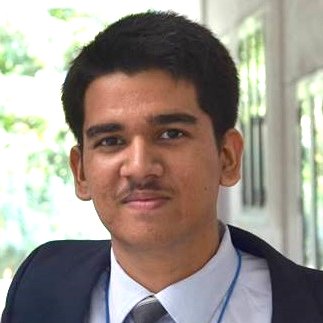 |
Tutorial 5:
Title of the Tutorial:Using SDR based testbeds to accelerate real-time prototyping
Speaker: Mr. Raghunandan N V, National Instruments
Schedule: February 25th, 2:00pm to 5:10pm, LH-1
Abstract:
Modern communications systems present a wide variety of challenges and trade-offs at different stages in the system design process. There is a constant need to bridge the gap between theoretical results and practical deployment cases. Testbeds bridge this gap by enabling researchers to prototype their systems and validate their theoretical findings. In this tutorial we discuss how software defined radios can be used to build scalable, state of the art testbeds that enable communications system prototyping, evaluation and testing. Software defined implies flexibility, agility and extensibility – all desirable attributes for communications researchers. These software defined testbeds can be used in prototyping of research applications such as cognitive radios, coding and signal processing techniques for PHY enhancements, Massive MIMO, mmWave, Coexistence and so on. Speaker Biography:
Mr. Raghunandan N V is a Technical Marketing Engineer with National Instruments. Raghunandan graduated from Amrita University Bangalore with a Bachelors of Technology degree in Electronics and Communications Engineering. He joined NI in 2015 as an Application Engineer. As a part of his role,he is involved in supporting, consulting and teaching customers from various industries and academia. His interests include Software Defined Radios, Embedded Systems, Automated Test and Wireless Test. He is passionate about teaching and has worked as a guest faculty at CIT Coimbatore, where he conducted a course on Implementation of 2x2 MIMO Systems for postgraduate students. |
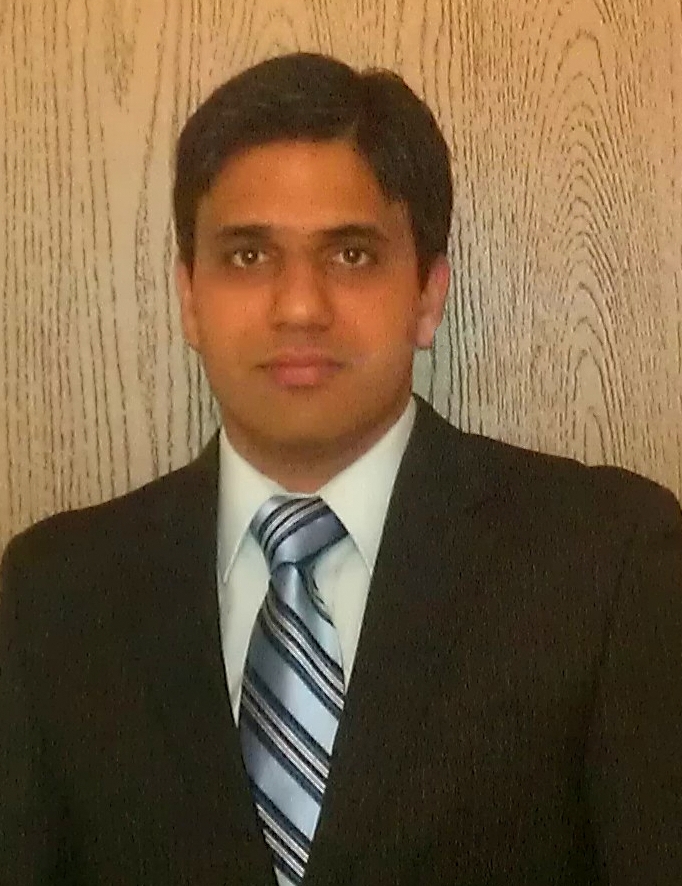 | Tutorial 6:
Title of the Tutorial: Online Learning with Dynamic Convex Optimization
Speaker: Dr. Ketan Rajawat, IIT Kanpur
Schedule: February 25th, 2:00pm to 5:10pm, LH-2
Abstract:
Convex optimization is a well-known mathematical tool that has been widely adopted to solve problems in machine learning, control theory, wireless communications, signal processing, financial engineering, robotics, etc. The conventional optimization problem consists of a fixed objective function that must be min- imized subject to a set of fixed constraints. However, practical problems arising in control theory, machine learning, and signal processing are often dynamic, where the objective function and/or the constraints vary over time. Examples include multi-agent target tracking, adaptive filters, sequential estimation, etc. The recent trend is to formulate and solve these dynamic convex optimization problems using low-complexity single-iteration algorithms. In this tutorial, we take a fresh look at some of the recently proposed algorithms from the lens of online learning and dynamic regret. By allowing the optimum to drift over time, we develop bounds on the worst-case performance of these algorithms. Several real-world applications, such as dynamic network latency prediction, video denoising, dynamic matrix completion, multi-agent target tracking, and multi-robot formation control will also be discussed in detail. Speaker Biography:
Ketan Rajawat (S06M12) received his B.Tech and M.Tech degrees in electrical engineering from the Indian Institute of Technology (IIT) Kanpur, India, in 2007, and the Ph.D. degree in electrical and computer engi-neering from the University of Minnesota, Minneapolis, MN, USA, in 2012. He is currently an Assistant Professor in the Department of Electrical Engineering, IIT Kanpur. His research interests include the areas of signal processing and communication networks. His current research focuses on distributed optimization algorithms, dynamic stochastic optimization, cross-layer network optimization, resource allocation, and dynamic network monitoring.
The speaker has conducted a tutorial on Dynamic Network Cartography at NCC 2015 held at IIT Bombay and has given several invited talks at national and international venues. |
|
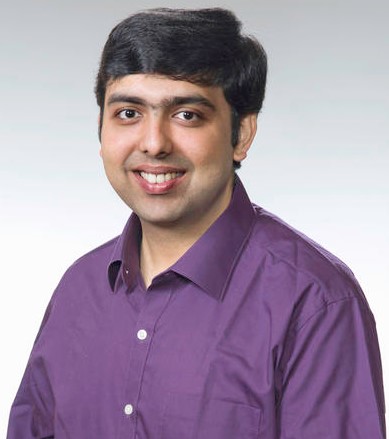
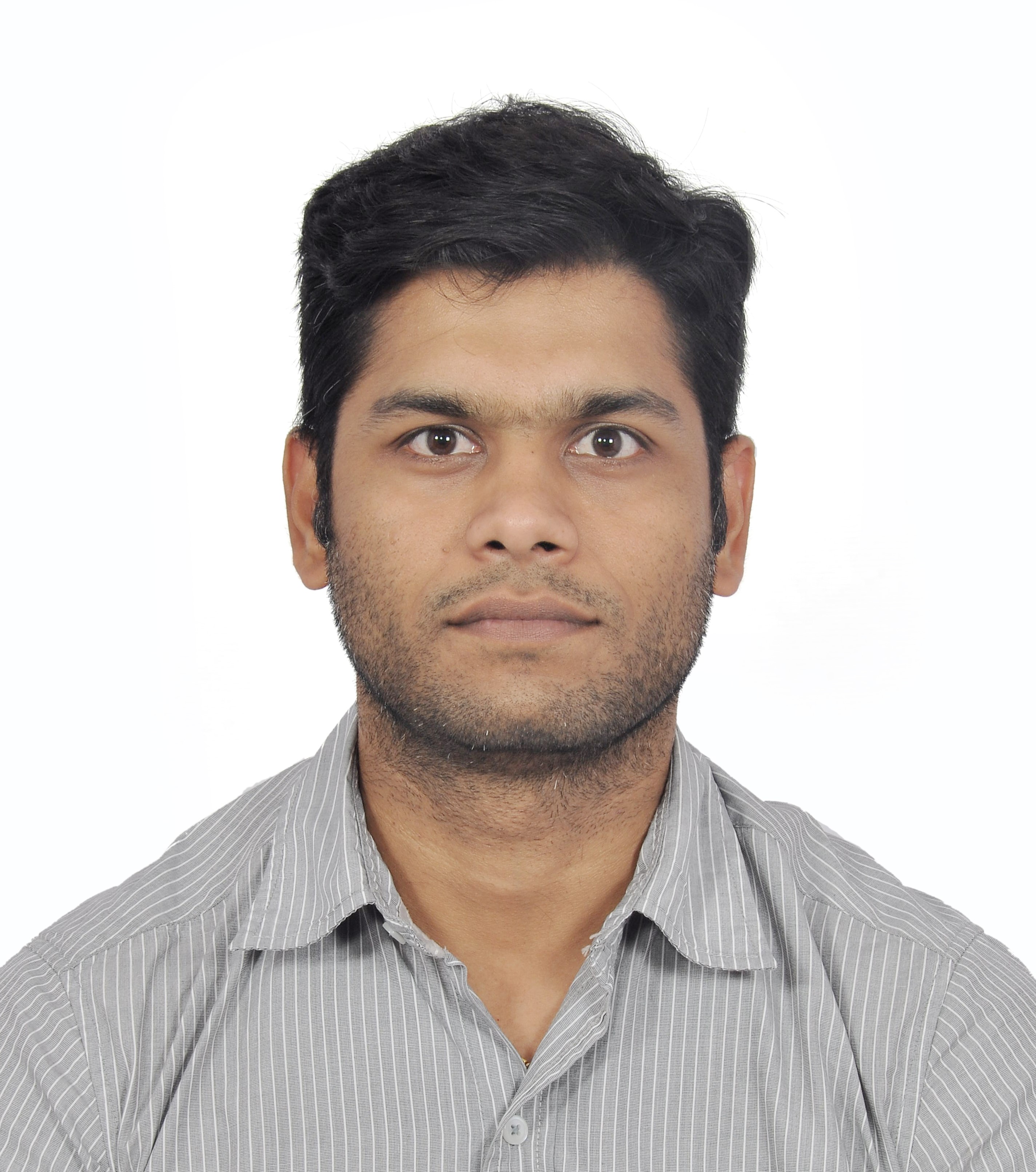 |
Tutorial 7:
Title of the Tutorial: Demystifying Deep Learning – a Hands-On MATLAB Tutorial
Speakers: Dr. Amod Anandkumar, Dr. Rishu Gupta, MathWorks India
Schedule: February 25th, 2:00pm to 5:10pm, Room no-220
Description
Deep learning achieves human-like accuracy for many tasks considered algorithmically unsolvable with traditional machine learning. It is frequently used to develop applications such as signal classification, image recognition, and automated driving.
In this hands-on tutorial , you can learn how MATLAB simplifies and accelerates:
Accessing popular pretrained networks and performing transfer learning
Training and fine-tuning deep neural networks
Using visualizations and other techniques for understanding network behaviour
Generating portable CUDA Code for optimized implementation
This tutorial will be run using R2017b version of MATLAB, Neural Network Toolbox, Computer Vision System Toolbox, Image Processing Toolbox, and Parallel Computing Toolbox. You can download a free trial at http://www.mathworks.com/trial.
Speakers Biography:
Dr. Amod Anandkumar is the senior team lead for signal processing and communications in the Application Engineering group at MathWorks India. Prior to this, he was a lead engineer with the Advanced Technology group at Samsung Research India, Noida where he developed physical layer techniques for LTE wireless communications systems and novel healthcare applications for smartphones. He was also a post-doctoral research fellow at the Biomedical Signal Analysis Lab, GE Global Research Bangalore, working on advanced beamforming techniques for ultrasound imaging and novel signal processing solutions for ICU patient monitoring systems, resulting in one US patent filing. Amod holds a B.Tech degree from National Institute of Technology Karnataka and a Ph.D. degree from Loughborough University, UK. His research interests include applied signal processing, next-generation wireless networks, computer vision, game theory, and convex optimization. He has published and reviewed papers in numerous international conferences and journals.
Rishu Gupta is a senior application engineer at MathWorks India. He primarily focuses on image processing, computer vision, and deep learning applications. Rishu has over nine years of experience working on applications related to visual contents. He previously worked as a scientist at LG Soft India in the Research and Development unit. He has published and reviewed papers in multiple peer-reviewed conferences and journals. Rishu holds a bachelor’s degree in electronics and communication engineering from BIET Jhansi, a master’s in visual contents from Dongseo University, South Korea, working on the application of computer vision, and a Ph.D. in electrical engineering from University Technology Petronas, Malaysia with focus on biomedical image processing for ultrasound images.
|
.jpg)








